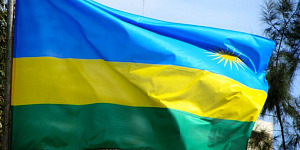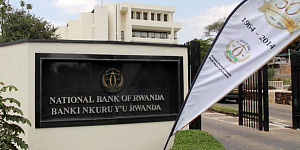Fitch Ratings has revised the Outlook on Rwanda's Long-Term Foreign-Currency Issuer Default Rating (IDR) to Negative from Stable and affirmed the IDR at 'B+'.
A full list of rating actions is at the end of this rating action commentary.
KEY RATING DRIVERS
The revision of the Outlook on Rwanda's IDRs reflects the recent history of weakening public finances and increasing public sector debt. This trend has been exacerbated by the pandemic shock. Moreover, Covid-19 will continue to pose significant downsize risk to the expected economic recovery, which could delay planned fiscal consolidation and lead to a further significant increase in government debt.
Rwanda's 'B+' rating reflects its low level of GDP per capita and persistent twin budget and current account deficits that have led to high and rising public and external indebtedness. These weaknesses are balanced by strong governance, a record of stable macro performance, high medium-term growth potential and the highly concessional nature of Rwanda's public sector debt.
The ongoing impact of the pandemic will delay any improvement in Rwanda's public finances, with pressure on government spending and the government's overall support for the economy continuing. We forecast the general government (GG) deficit to narrow to 8.6% of GDP for the fiscal year ending June 2022 (FYE22), lower than the 9.2% estimated for FYE21 but much higher than the current 'B' median forecast of 5.3%.
Recovery of economic growth will bring a slight increase in government revenue in FYE22 and FYE23, but the government's medium-term revenue strategy is largely focused on tax administration measures. Consequently, we do not expect significant new revenue measures before FY24. Most of the medium-term consolidation will come as pandemic-related spending falls out of the budget between FYE22 and FYE24.
The high budget deficits associated with the pandemic have led to a sharp increase in public debt levels. We forecast GG debt to reach 70% of GDP by FYE21, up from 55% at FYE19, and 23% at FYE12. This is broadly in line with the 'B' median of 68% of GDP, but we project GG debt to continue rising through at least FY23. Much of Rwanda's outstanding debt stock is concessional or near-concessional debt from official lenders, which makes debt service affordable. Rwanda's estimated debt/revenue ratio of 291% and interest/revenue ratio of 10.4% for FYE21 are both below the 'B' medians of 308% and 12.3%, respectively.
Debt held by state-owned enterprises (SOEs) and other contingent liabilities to the sovereign pose additional risk to Rwanda's public finances. Our GG debt estimate includes approximately 5% of publicly-guaranteed debt, but a lack of transparency into SOE finances, including Rwandair and the Kigali Convention Centre, means that additional debt could materialise on the government's balance sheet. SOE debt and contingent liabilities are an area of work in Rwanda's IMF Policy Coordination Instrument. The non-disbursing programme includes reform targets calling for expanded coverage of fiscal risks, a "health-check" assessment of risks from SOEs, and the drafting of a Fiscal Risk Statement, the first of which was published in June 2020. The IMF Board approved the fourth review on 1 July 2021 and has extended the programme for an additional year.
Fitch forecasts a return to positive real GDP growth in 2021, to 5.0%, after a 3.4% contraction in 2020. Growth in 2021 will be supported by a recovery in the industrial sectors, which experienced much slower growth or contraction during the pandemic year; and above-average rainfall in the first of Rwanda's two rainy seasons, which indicates strong performance in the agricultural sectors. The third wave of Covid-19 currently hitting the region brings downside risk to the 2021 growth forecast, with the service sectors most vulnerable to the ongoing restrictions put in place by the government. Rwanda's tourism and hospitality industry will not see significant recovery in 2021 regardless of restrictions, as many foreign tourists and business travellers are likely to stay away.
In 2022 and beyond we expect a return to growth of between 7% and 8%, in line with pre-pandemic growth rates. Rwanda's five-year growth average to 2020 of 4.5% is more than three times the 'B' median of 1.5%. Our expectation of medium-term growth recovery is partly driven by the government's fiscal and monetary policy support measures. However, as vaccination rates are low and likely to remain so through 2022, future waves of Covid-19 are a downside risk to Rwanda's growth outlook. Furthermore, a significant deterioration in the domestic political situation or in governance would negatively impact Rwanda's growth model, which remains highly dependent on access to official donor financing.
We forecast inflation to fall to 3.5% in 2021 and to increase slightly to 4% in 2022. Inflation accelerated to 9.9% yoy in 2020, which was largely reflective of supply-side constraints. The National Bank of Rwanda (NBR) lowered the main policy rate by 50bp to 4.5% in March 2020 and has held it there since. The NBR has also lowered reserve requirements to incentivise banks to increase their lending. Real private sector credit growth accelerated in 2020, but we expect banks to build buffers against non-performing loans and reduce exposure to certain underperforming sectors, like commercial real estate. As a result, private sector credit growth will remain positive, but will slow from 2020.
Rwanda has persistent external imbalances related to the current growth model, which depends on a high capital import bill and high services debits. Fitch forecasts net external debt to reach 62% of GDP by end-2021, which is almost twice the current 'B' median of 33%. The current account deficit was broadly unchanged in 2020 from 2019, as export slowdown was matched by import compression.
In 2021, Fitch forecasts the current account deficit to 12.9% of GDP from 12.0% in 2020, as imports return to their pre-pandemic levels and tourism receipts remain low. The fall in imports in 2020 contributed to a rise in external reserves coverage. We forecast reserves to further increase to USD2.1 billion, or 5.6 months of current external payments, by end-2021.
ESG - Governance: Rwanda has an ESG Relevance Score (RS) of '5+' for both Political Stability and Rights and for the Rule of Law, Institutional and Regulatory Quality and Control of Corruption. Theses scores reflect the high weight that the World Bank Governance Indicators (WBGI) have in our proprietary Sovereign Rating Model. Rwanda has a medium WBGI ranking at 53 reflecting a recent track record of peaceful political transitions, a moderate level of rights for participation in the political process, moderate institutional capacity, established rule of law and a moderate level of corruption.





































